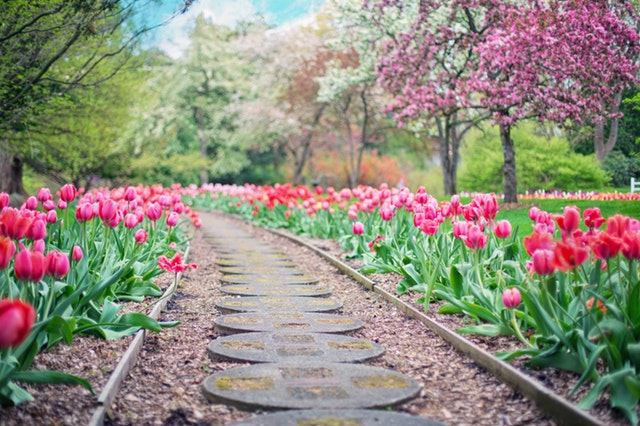“I go to nature to be soothed and healed, and to have my senses put in order.” – John Burroughs
Life and death. It’s an unavoidable, perpetual cycle that’s around us every day. We see it when one season fades into the next or when mushrooms sprout from rotting wood. The cycles of death, decay, and rebirth are all vital parts of the life cycle. In a human sense, sometimes these phases – especially death and decay – can be emotionally and physically taxing for those left behind. During these phases, we may feel extremely stressed, fatigued, depressed, or out of balance. We may prefer to pull the covers over our heads rather than put our feet on the floor…but one of the best wranglers of our woes is Mother Nature herself.
For those grieving, nature is a good reminder that life goes on. It may feel as if life comes to a screeching halt after losing a loved one, when, in reality, it doesn’t. The sun will rise the next morning and the earth will continue its revolution around the sun. For some, reaching this realization can be angering – how in the world is life supposed to go on without my loved one? When individuals have this mindset, it’s challenging to find the comfort and assurance that things will be okay going forward. Often, a change of scenery can offer this. Spending time outdoors and intentionally connecting with nature prompts us to slow down. With calmer minds, we’re better able to process the loss and our feelings around it. We may even begin noticing things that we didn’t really pay much attention to in the past, such as the dragonflies mentioned in the last blog.
Numerous research studies have shown the health benefits nature graciously provides, such as reduced blood pressure, heart rate, muscle tension, production of cortisol, and recovery times. Additionally, being in nature – even seeing pictures of nature – has been associated with positive moods, increased productivity, and overall vitality. Being in nature lends alternative perspectives to our own maladaptive thinking as well; when we’re in nature, our mindsets tend to be based in solace, regeneration, authenticity, and experience. With such beneficial outcomes, it’s easy to see why there’s been a growing trend over the past decade of wilderness therapy and nature-based retreats.
Nature gives us healing tools; we simply need to be open to receiving these gifts. If you’re deep within the grieving process, it can be difficult to acknowledge organic omens and lessons. You may feel like a caterpillar spinning its cocoon, just in time for hibernation. If you’re willing to allow nature’s support along your bereavement journey, it’s more likely that you’ll emerge as a beautiful butterfly once the dark period passes.
To rekindle your relationship with nature and to start down the healing path, try a few of the following activities:
- Give the electronics a (lengthy) break
- Walk barefoot on the grass, sand, dirt, or in the water (called “grounding”)
- Stargaze
- Plant and tend to a garden
- Take a hike
- Open your curtains, blinds, or windows
- Go for a swim
- Go camping
- Walk your dog
- Listen to birds singing/chirping
- Watch the tide roll in
- Rest in a hammock
- Meditate outside
- Visit a wildflower center or botanical garden
- Join a recreational outdoor sporting league
- Go fishing
- Beachcomb/collect seashells
- Stop and smell the roses (literally!)
TAKE-AWAY: There’s no right or wrong approach in dealing with grief or the pain associated with it. Each of us has our own grieving process, as well as our own view of nature. Finding meaningful ways to connect with the earth and all its beauty can help us to see the light again rather than live in the shadows. Over the next two weeks, I encourage you to try out some of the above activities (even if you aren’t grieving). If possible, keep track of how you felt before and after spending time in the great outdoors.


